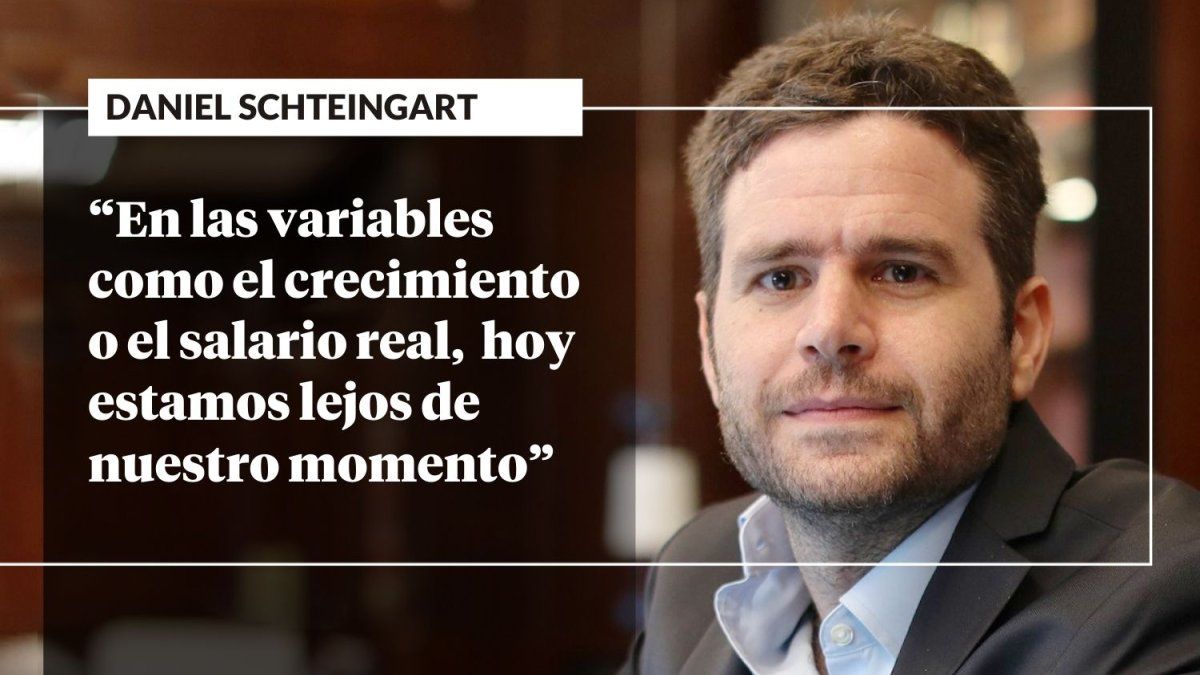If there is something that characterizes the Argentina They are the swings.
We are a volatile and changing country. A living electrocardiogram: we go from euphoria to depression, from crisis to hope. We think that we are an unlivable and decadent country, and after a while, that we are the best country in the world, that we can be a power and that we are proud to be Argentinian.
This emotional tachycardia has very specific handles. Since the beginning of the 20th century, we have spent 4 out of every 10 years in recession, a very high figure for the world average. And to make matters worse: over the years we have become more volatile, when the opposite happened in the world.
With so much up and down it is difficult to understand Argentina: how we are today, how we have evolved throughout our history and how we are compared to other countries. Understanding what we are as a country is something that obsesses us at Argendata, a Fundar project in which we make available to the public and interpret hundreds of data on the main issues in Argentina, such as poverty, growth, inequality, health, inflation, the labor market or the productive apparatus.
Casa Rosada Government
Transforming the Argentine reality requires political decision, agreements, constructive debates, long-term vision and public policies.
Mariano Fuchila
From the analysis of this data we found a common pattern, which we can summarize in three truths about Argentina.
First truth: we are not a shit country. In practically any development metric, Argentina is still a mid-table country and up at a global and regional level. Our GDP per capita is 28% higher than the world average. Life expectancy at birth is 77 years, 4 years greater than in the world and 1 more than in the region. The average years of schooling for the adult population is 11, 2 more than the regional average and 3 more than the world average. Contrary to what is believed, and despite the recent deterioration, income poverty – measured with the Argentine standard – is lower than in the world: 53% versus 66%. And according to the Liberal Democracy Index of the University of Gothenburg, Argentina is among the 35 most democratic countries in the world and very close to the average of developed countries.
Second truth: not necessarily all times in the past were better. There is an idea commonly installed in Argentina which is that of nostalgia: before we lived better. In some very important dimensions of well-being this is true: in 2024 the real salary is 39% lower than the record of 1974 and the GDP per capita almost 15% lower than the peak of 2011. But there are a large number of other indicators where this It is not like that and today we are better than ever before.
Between the 1870s and the present, life expectancy at birth rose more than 40 years and the percentage of children who died before reaching age 5 went from 24% to less than 1%. As a result of the diffusion of education -first primary, then secondary and later tertiary-, the years of schooling of the population aged 15 and over went from just 1.5 to 11.1. Democratic quality improved, mainly after the recovery of democracy in 1983. And the percentage of the overcrowded population fell steadily since 1980, from 9% to 3%.
Third truth: in almost any development indicator, Argentina has lost ground compared to other countries over the decades. Although in many metrics Argentina has progressed throughout history, other countries have done so faster. That is why our country has been falling in the rankings of every social and economic indicator that appears.
The current GDP per capita is quadruple that of 1900. But, out of 115 countries, Argentina went from being in the top 10 to 41st place, as a result of the fact that GDP per capita multiplied by 7 in the world.
Life expectancy has not stopped rising here. But the dissemination of science and medicine and the development of health infrastructure also occurred elsewhere. For this reason, Argentina went from being in 20th place in life expectancy in 1950 to 42nd today. Thus, countries like South Korea, Chile, Hong Kong or Spain, which in the first half of the 20th century had a lower life expectancy than us, passed us by.
flag-argentina-feraido.jpg

The country is experiencing a clear process of relative decline.
Something similar happened with the years of education. Although they rose steadily here, other countries progressed faster, and that is why we went from being in 23rd place in 1970 to 36th today. Countries like Taiwan or the United Arab Emirates, which until then had fewer years of schooling than us, passed us by in recent decades.
The three truths leave us a bittersweet panorama. Argentina continues to be a country in the middle of the table and up and in many indicators it did not experience an absolute decline. But the relative decline is clear.
What do we do with this? There are many things on which, rather than dynamiting everything, it is possible to build forward. This is the case of indicators where, despite the relative decline, today we are better than in the past, such as life expectancy or years of schooling of the population. But there are also others where we must straighten the course much more strongly to find our north again: this is the case of economic variables such as growth or real wages, where today we are far from our moment.
Transforming the Argentine reality, solving its problems and ceasing to be the country of the permanent electrocardiogram requires many things: political decision, agreements, constructive debates, long-term vision and public policies, which consolidate and perfect what we know more or less works and that they correct at the root what is not working.
For all this there is a fundamental requirement: accurate data to understand where we stand. That’s why we created Argentata.
Doctor in Sociology (IDAES-UNSAM). Curator of Argendata and Director of Productive Planning at Fundar
Source: Ambito
I’m a recent graduate of the University of Missouri with a degree in journalism. I started working as a news reporter for 24 Hours World about two years ago, and I’ve been writing articles ever since. My main focus is automotive news, but I’ve also written about politics, lifestyle, and entertainment.




